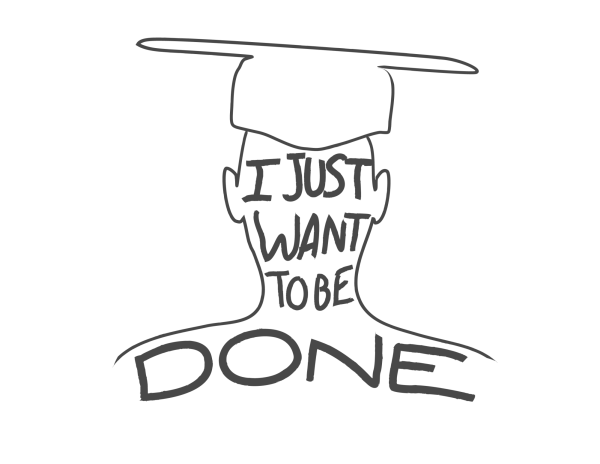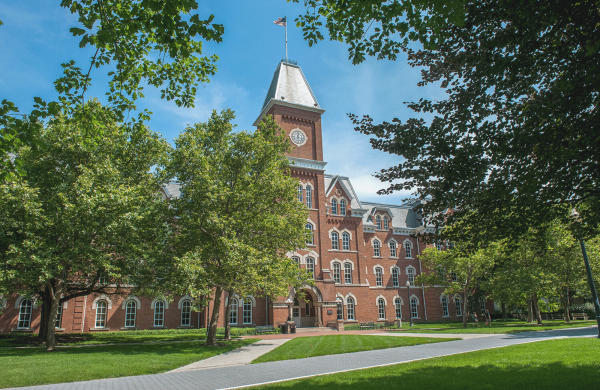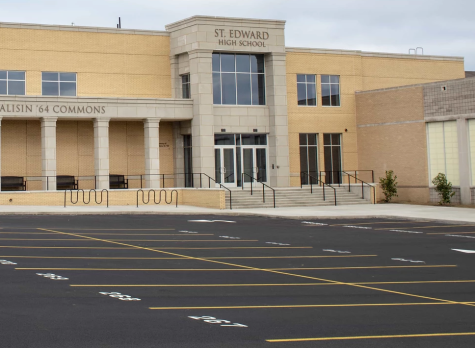Signs, Signs, Everywhere is Signs: It’s Time to Examine School Hair Policy
The updated handbook was shared with the school community by the St. Edward administration prior to the start of the school year, and it was not what many were expecting. Since May, rumors have been circulating throughout the school community regarding the return to the dress code in effect during the 2019-2020 school year. The Phase 1 return dress code was kept for the entirety of the last school year, and with the start of the 2021-2022 year, many were expecting a reset. However, that was not the case. The dress code remains as it was. Oxfords without ties, St. Edward branded polos, and low-top athletic shoes are permitted under the everyday dress code, which will be in place the majority of the coming school year. Like usual, the only exceptions to these rules are Green and Gold Dress Down Days and liturgies/all-school events. On liturgy days, blazers or sport coats and ties are required, a continuation of last year’s appearance policies.
Both myself and many other students are satisfied with the current dress code. It offers comfort, especially in the summer, professionalism, and it helps to maintain a uniform appearance among students. A large part of the St. Ed’s tradition is building brotherhood among students. Research has shown that uniforms improve attendance, decrease clothing expenses, and help less-advantaged students feel more comfortable in a school setting. In a school as diverse as St. Ed’s, uniformity in clothing can help students see past the surface-layer of students who may be physically different.
Though the dress code does provide flexibility and a very generous range of options, the same school hair policies remain in place for this school year. According to the handbook, students must keep their hair as follows: “Neatly cut and combed, length not to exceed top of eyebrow in front, top of collar in back, nor below the ear on the side. Estimated length of hair should not exceed three inches. Students must have their natural hair color and tapered lengths rather than drastic variations in length and sharp cuts.”
In recent years, complaints have come up across the United States regarding discrimination based on hair style of students. Students across the US, in both private and public institutions, have been suspended for wearing their hair in a natural state. These rules largely discriminate against African-American students, with the New York City Commission on Human Rights stating that students and employees are entitled with the rights to “natural hair, treated or untreated hairstyles such as locs, cornrows, twists, braids, Bantu knots, fades, Afros, and/or the right to keep hair in an uncut or untrimmed state.” The NAACP has also noted this uptick in cases, even going so far as to file a complaint to the Florida Department of Education after a student was suspended for not having their hair in a “tapered cut, off the collar and ears,” as the school handbook describes in a sentiment similar to that of the St. Edward handbook. At the time of its founding, St. Edward High School educated mainly white students, and this remained the same for many years following its founding. In 1993, the handbook said that students’ hair must be “neat,” and a similar statement was made by the 1951 handbook.
However, today the St. Edward community has diversified greatly, with nearly 20% of the student body being African-American. A current senior and member of the Diversity Club said, “When St. Ed’s was founded in 1949, there was a very small population of minority students in the school. The appearance code that was created does not properly attend to the needs of African-American students. It is also disappointing that natural hairstyles for African-American men are not considered natural at our school. I definitely think the appearance code is in need of an update to be more inclusive for students of other cultural backgrounds.”
It is time to consider the unintended consequences of school policies that may still impact the dignity of the student population. As a Holy Cross school that works so dutifully to uphold the dignity of all persons, it is imperative that we continue to examine various policies and practices that might still be limiters.
The current hair code is unintentionally discriminatory, and the fact that a large-percentage of the school community cannot even wear their natural hair is a testament to the outdated nature of the school’s appearance code. As a school whose core values revolve around cultural humility and meeting the needs of all students regardless of race, it is hypocritical for the hair code to remain the same year after year. St. Edward must change the hair code to promote the individuality and natural hair of African-American students, and to remain a leader in promoting cultural diversity within private high schools.
While school uniform policies work due to their ability to level the playing field in an economically diverse school community and decrease clothing-driven judgements, hair policies do not have the same impact. Hairstyles are one of the most cost-effective ways to express individuality, and they often do not come with the same expenses that maintaining an expensive wardrobe would come with. A senior and member of the diversity club also said, “I do think that the hair restrictions limit individuality and expressive ability of students. It doesn’t allow all students to be comfortable with their appearance or differentiate themselves from their classmates with their hair.” Promoting individual expression, so long as it is within reasonable bounds, can increase creativity, self-discovery, and promotion of a personal or cultural identity. In restricting hair styles, the school is limiting individuality, and consequently the ability for students to realize or promote their individual beliefs and personality.
Lastly, the unprofessionalism surrounding long-hair has been receding. Billionaire CEO and founder of the Virgin Group Sir Richard Branson has always had long-hair and been able to maintain a global business empire. Mark Cuban had long-hair, too, as well as many others. Even various male teachers at the school today have long hairstyles. It is clear that long-hair is not an obstacle to success in the modern world, so long as it is well-maintained, as evidenced by the success of many with hair that may have been previously described as “hippie.” As student Luke Winstead said, “A student should be allowed to grow out his hair and have any style he pleases so long as it is well-maintained.” Jackson Miller echoed this same sentiment by saying “Long hair should be allowed as long as it is maintained and not all over the place.” I have heard this common thread from many students and faculty: that as long as hair is maintained properly, of a natural color, and is not cut in an attention seeking, drastic manner (i.e. mohawks), then professionalism and respectability remains.
If St. Ed’s wishes to increase diversity, individuality, and play a part in decreasing unintended racial discrimination, then the school must rethink and revise the hair appearance code.




